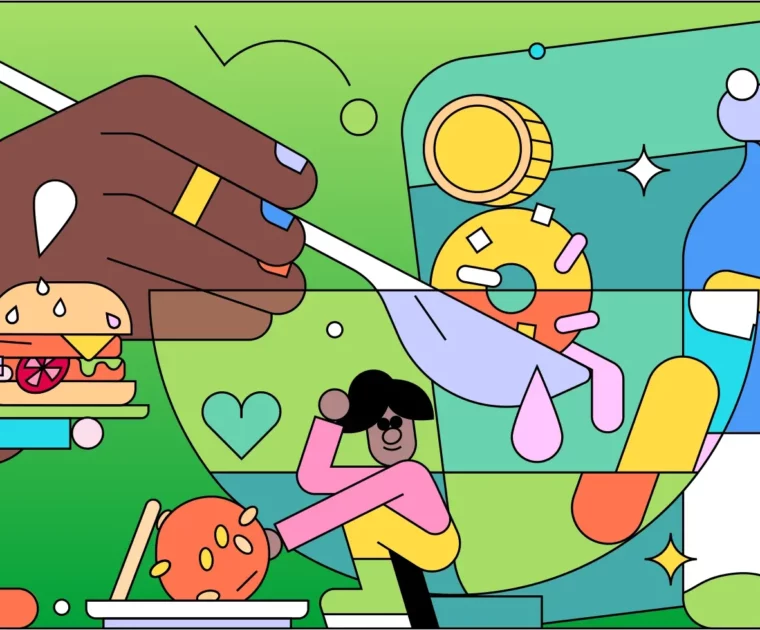Updated May 2019
Working with bloggers can be a somewhat daunting task if you’ve never done it before. I know this from experience. In fact, the rabbit hole that is influencer marketing is what pivoted our original business model from being a fashion shopping app to being a robust influencer platform.
I know there are a TON of articles out there about WHY you should work with bloggers but there isn’t a whole lot of detailed info about HOW to set up your first campaign from start to finish. I know this because even in 2019, 75% of the brands that use our platform experience the SAME pitfalls that we fell into when we first ventured into influencer marketing and working with bloggers in 2014(ish).
It was a total effing headache!
So, in this post, I want to tell you the fundamentals of working with influencers that I learned, not from running an influencer marketing firm, but from trying to run a damned campaign BEFORE we ever started connecting brands with influencers.
Six BIG Epiphanies I Had About Working with Bloggers and Rolling Out That First Influencer Campaign
So First, a Little Background on My Pre-Shelf Awesomeness
I’m the Co-Founder of The Shelf, an influencer marketing platform. Most people don’t know this about us, but around 2014(ish), our platform made a pretty significant pivot into where we are today. Prior to this pivot, The Shelf was a smart-shopping app that sent sale-alerts to people as soon as the products they liked were discounted.

When we decided to start marketing our app, we tried Google AdWords, social ads, social media, and a bunch of other tactics to help market our app. But none of the typical techniques showed any sign of being effective.
Then, one day, I had a small epiphany.
(And this epiphany also requires a little more backstory… sorry!)
Before The Shelf, my mother and I had a little quilt business that we started together. Yes, I know. Totally cool! Quilts + my mom = POPULARITY.
We had a blog for our little quilt business and every six months we would participate in a quilters’ blog-hop, where about 20 quilters would each send traffic to one another. This was the greatest thing in the world for us! Because our rinky-dink blog wasn’t overly popular, the blog-hop allowed us to piggy-back on top of other people’s audiences and gain new traffic. The other thing that was really, really great about these blog-hops were the giveaways. Each participating blogger would host a giveaway on their blog, and this always did wonders for us! We’d get 600+ comments on each of our posts!
My First Epiphany Was to Work with Bloggers and Give Stuff Away
Based on that experience, my plan to promote our shopping app via bloggers began to hatch.
First, we needed to find bloggers who were bigger than us and get them to promote our content.
Second, we needed to do giveaways! From our experience, those got results!
At this point, my idea wasn’t overly developed. This fact became abundantly clear during our first attempt at influencer marketing when I got a friend of mine to host our first giveaway on her rather large quilt blog (key word being “quilt”).
Needless to say, our shopping app didn’t resonate quite so well with her audience. We had THREE people join our site because we bribed them with a $100 gift card to a fabric store. (Our price per user was a not-so-great $33.)
It wasn’t overly obvious to me what I’d done wrong though. My conclusion was that this initial blogger must not have been popular enough. So I contacted a much bigger blogger friend of mine also in quilts about doing a post about our fashion app.
Surprise surprise! This post didn’t do too well either. While we did get people to join our site in order to enter that giveaway, they wound up hating our app. It was just too untargeted. Further, quite a few of them sent us mean emails, demanding that we remove their email addresses.
Who knew quilters could be such a feisty little bunch?
Epiphany #2 : A Little Bit of Relevance Goes a Long Way
In hindsight, my mistake with the quilters is about as dumb as it gets. That audience was not even close to being our correct demographic. We had a fashion app! We needed fashion bloggers.
But I didn’t know any fashion bloggers!
So off to Google I went to search for “fashion bloggers”.
Surprisingly enough, typing in broad queries like that DOES in fact get you results. I found a slew of “top 20” or “top 50” or “top-whatever” lists.
After that easy Google search, I began breaking these lists down, blog by blog, finding contact info and pasting all of that into a spreadsheet, after which I pretty much mass blasted these celebrity-level bloggers with my “opportunity of a lifetime: partnering with The Shelf” messages.
Finding contact details took longer than you’d think though. And no one got back to me.
In fact, my first 50 outreach emails received no responses at all. That rather sad result transitioned me quite nicely over to my third realization.
Epiphany #3 : Don’t Go for the “Kim Kardashians” of the Blogosphere”
Kim Kardashian? Okay, this was in 2014, back before the hubby and kids. But… you get my point. If you line up bloggers on a spectrum of influence, some of them have become so influential that they have reached the status of being mini-celebrities.
Would a celebrity go with you to the prom? No, probably not. They’re busy going to the prom with other celebrities.
The same applies in this case. Celebrity bloggers are off galavanting around with celebrity brands. Not some no-name startup, like The Shelf.
This isn’t a bad thing. Just because a blogger isn’t an enormous celebrity with a global following does not mean that they don’t have influence.
After realizing that we were aiming a little too high, we decided to shoot for people getting around 15-30 comments per post.
But that’s where we got stuck. Finding this elusive 2nd-tier group of bloggers was quite a bit more challenging than scanning “top 50 lists.” No one was publishing lists of up-and-comers. I started to embark on a multi-day project of sifting through blogrolls and aggregation sites like Bloglovin. Once I found a blogger who looked like a good fit for us, I’d add her to a spreadsheet and then I’d start sifting through her blogroll, assuming she had one, trying to find more matches.
This task proved to be way WAY more time-consuming than I’d expected. The part that took the most time was FINDING the right bloggers for our app. Now that I had realized the importance of relevance, I became neurotic about finding the right matches. For our fashion app that helped people save money, we decided to look for fashion bloggers who were price-conscious. For every 10 bloggers that I’d come across who matched our engagement criteria, only 1 or 2 of them would also be price-conscious.
I worked on this for days. It got to be really embarrassing when I’d report to my Co-Founder each day that after 4 hours I was only able to reach out to around 10 people.
I wish I could say that things started moving a little better at this point. But there was one more light bulb that needed to go off.
I was spending tons of time narrowing down the right bloggers. But I wasn’t spending any time on my emails. I was sending them all the same basic template. And even though I myself knew why I had selected a particular blogger (as opposed to the 50 others that I had deemed irrelevant), I wasn’t telling the blogger about my rationale.
And no wants to feel like they’re at the receiving end of a mass-email blast.
Epiphany #4 : Cold-Emailing is Lame (but it sure does work when it’s done right)
This should really be pretty obvious. But I admit, it wasn’t obvious to us right away. I finally arrived at this conclusion after quite a bit of A/B testing. I tested out long emails, short emails, personalized emails, emails that mention payment in the title…literally every variation in the book. In the end, I found that my winning combination was to focus on personalization. Short. And with a subtle implication of compensation mentioned within the my message The email subject that did the best was somewhat vague, but also intriguing: “Collaboration Idea.”
Powerful, right?
This winning combination is going to vary for everyone. But the point is, don’t just settle on the first thing you write and then blast that out to a list of 100 people. Try variations. And personalize everything! Try to put yourself in their position: What sort of email would YOU want to receive? What kind of email would really get you excited?
After weeks of working on this influencer marketing project, my first big break came in the form of a price-conscious fashion blogger named Kimberly, who maintained a blog at Penny Pincher Fashion.
She will always be my favorite blogger. She was the first person to give us a chance, and the results of the giveaway I did on her blog were so fantastic, I knew I was onto something! Those results gave me the incentive to keep going with blogger campaigns, because honestly, things were looking pretty bleak with only the quilter posts under my belt thus far.
Epiphany #5 : Name-Dropping Helps
Up until Kimberly’s post, our hit rate was 1 in 80 (!) – as terrible and embarrassing as that is.
That being said, we’d learned a lot by that point. Moving forward, we were armed with all of that knowledge and now we had a link to that great post put together by a reputable blogger. From that point on, all of my outreach emails included a link to her post and this worked wonders. Our hit rate became closer to 1 in 10. And this gave us the momentum we needed to line up our next two posts.
Epiphany #6 : Paying Bloggers is NOT a Bad Thing
There are many brands out there who passionately refuse to pay bloggers.
We were never one of those brands. At that point, I was so darn glad to get someone to respond to my emails I was more than willing to shell out some cash. But that’s not to say I wasn’t extremely cautious with how we spent our money. At this particular stage of our company, my partner and I had both been working for a full year without salary so we watched every dollar spent.
I think it was this extreme cautiousness with our money that allowed the rest of my epiphanies to come in rapid succession. From that point on, I’m happy to report that I wasn’t learning my lessons the hard way anymore.
During our influencer marketing efforts, we ran a total of 5 campaigns, not including the two quilt posts. Of those 5 posts, there was only one that didn’t hit our campaign goals (and it just missed by a little bit). The other four were such huge successes, we felt like we hit the lottery. They outperformed our goals by 3 times!
In fact, the blogger who charged the most ($400 for a post + the $250 gift card that we gave away) performed exponentially better than our wildest expectations. She sent a whopping 9,000 people over to our site within the first few hours. And we had 3,000 signups by the end of the week!
We ended up taking that pivot from The Shelf as a shopping app and applying what we learned and making The Shelf into an influencer marketing tool. Guess what? We started our focus in fashion.
The 5 Mini Epiphanies That Really Brought Everything Home for Us
Now that I’ve given you all that history, I can tell you what I know now:
Do your research!
Do it thoroughly (preferably with a platform like ours, The Shelf). Your highest priority should be to find bloggers that match your demographic down to the finest nuance.
Get performance metrics. Depending on what sort of campaign you plan on doing (in our case it was a giveaway), check back through the blogger’s old posts to make sure they have a track record of performing well for the type of project that you plan on approaching them about. I was extremely diligent with this. I’d review the last few months of posts for each person before I’d contact them. I’d also check to see what the comment count looked like on their past giveaways (most people had huge fluctuations here). Because of those fluctuations, I’d then look to see which giveaways performed the best, and why. We needed to be able to replicate their results.
Find out if brands returned. I also took this a step further to see if the blogger had repeat customers. If a brand used her once, did they come back a few months later? This is always a good sign if people liked them enough to run a second post!
Get a media kit. Most bloggers have a media kit. If they don’t, it’s okay for you to ask them about their traffic stats and past campaign results.
Communicate expectations. I was always very clear about what sort of ROI I wanted to achieve. Be nice about it, since not all bloggers will be receptive to this. However, you should let them know what expectations you’d like and then ask if they think this is going to be achievable based off of previous campaigns they’ve done Every blogger that I spoke to about this was totally up-front. Also, by defining my goals before the post went live, it helped me out with the one post which didn’t perform well. The blogger was aware her post didn’t deliver the results I was looking for. She did everything she could to make it right, creating multiple social posts, as well as sending out a newsletter to her followers. The extra effort did wind up getting us close to the ROI we were shooting for initially.
In the end, our four campaigns were a huge success! We wound up paying around 30 cents per signup. You really can’t beat that! That ROI blew Google AdWords so far out of the water it was worth the massive amount of torment that went into learning the ropes behind the enigma that was influencer marketing.
Concluding Thoughts
You might be wondering: why did you guys switch ideas if you were doing so darn good after these campaigns? Good question. It was a very gradual change. After we decided that influencer marketing was the way we would grow our business, we started building an internal database for us to use when setting up these pushes.
If you remember, the shopping app was all about products and pricing. The technology we have in our current app powered that very shopping app that gave us the ability to analyze blogger posts and extract out the products they talk about. What does this mean and why is this great? We know exactly what brands and prices of products are being written about. Using this technology we had earlier, we built ourselves a jerry-rigged blogger search engine that let us discover bloggers with a certain amount of comments per post (say, 15-30) and also narrows down further to bloggers who talked about affordable stores and sale items. Bam! That’s a very specific demographic (ours). This blogger list was automatically generated, rather than spending days compiling a list with Google.
Initially for internal use, we saw a huge opportunity. We had struggled so much with creating our own blogger campaigns but this tool made our lives SO much easier! We would have been doing mankind a disservice if we’d kept it to ourselves.
All kidding aside, that’s the story behind our first influencer marketing campaigns, about the mistakes we made and the progress we’ve made to date. The rest is history.






